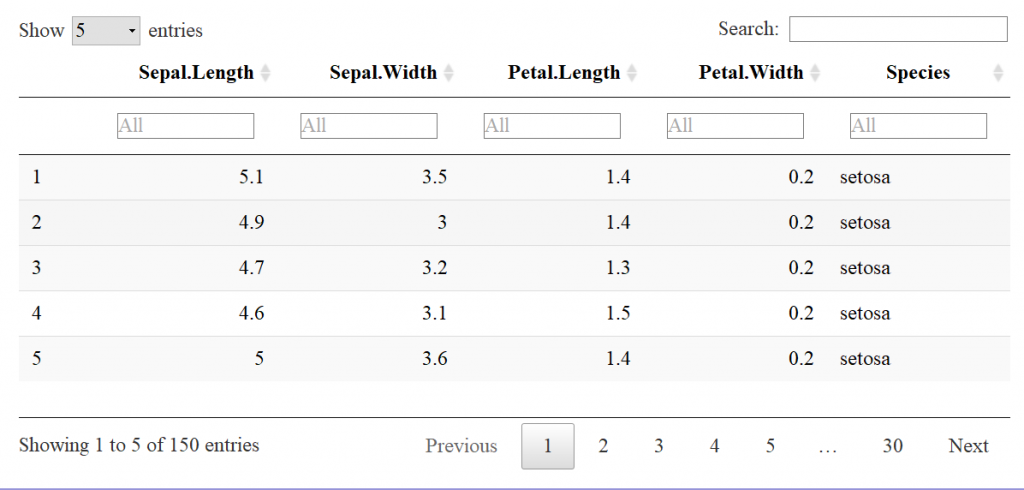
Another great term of the CGRB’s Bioinformatics User Group (BUG) is in the books!
This term we had a wide range of presenters—graduate students to Principle Investigators. It was nice to get the perspective of folks who are in different parts of their careers.
A special thanks to all of our presenters:
Sept 25: Christopher Sullivan and Ken Lett (Center for Genome Research & Biocomputing)
- Title: CGRB’s new DFS for one and all!, i.e., Don’t know what a Distributed File System is? Come find out!
- Abstract: The CGRB works with researchers to provide the most robust computational infrastructure available today. Many group rely on file services at the heart of their research computing needs and the CGRB has worked for over 2 decades to provide redundant high speed file services. Over the years users have grown to expect the best solution at a very cheap price. Because of this model the CGRB spends a great deal of time evaluating the available systems to ensure we always have the best at the lowest price. In the past year the CGRB has worked to evaluate and purchase new file service hardware that will replace our existing setups. We will be explaining the pathway taken to bring the new service online and some of the new exciting features.
Oct 9: Lillian Padgitt-Cobb (David Hendrix Lab, Biochemistry & Biophysics)
- Title: A phased, diploid assembly of the hop (Humulus lupulus) genome reveals patterns of selection and haplotype variation, i.e., Resolving functional and evolutionary mysteries of a large, complex plant genome with genomic data science
- Abstract: Hop (Humulus lupulus) is a plant valued for its use in brewing and traditional medicine. Efforts to determine how biosynthetic pathways in hop are regulated have been challenged by its complex genomic landscape. The diploid hop genome is large, repetitive, and heterozygous, which challenged early attempts at sequencing with short-reads. Advances in long-read sequencing have improved detection of repeats and heterozygous regions, revealing that the genome is nearly 78% repetitive. For our assembly, PacBio long-read sequences were assembled with FALCON and phased into haplotype assemblies with FALCON-Unzip. Using the phased, diploid assembly to assess haplotype variation, we discovered genes under positive selection enriched for stress-response, growth, and flowering functions. Comparative analysis of haplotypes provides insight into large-scale structural variation and the selective pressures that have driven hop evolution. The approaches we developed to analyze the phased, diploid assembly of hop have broader applicability to the study of other large, complex genomes.
- Lillian’s GitHub: https://github.com/padgittl/CascadeHopAssembly
- Hop Genome Browser: http://hopbase.org/
Oct 23: Kelly Vining (Kelly Vining Lab, Horticulture)
- Title: R/qtl, i.e., Applications and methods for analysis of quantitative traits
- Abstract: R/qtl is an R package that is used for genetic mapping and marker-trait association. This presentation will explore specific features of R/qtl applied to plant breeding populations. Data types, functions, and interpretation of results will be explored.
Nov 6: Ed Davis (Center for Genome Research & Biocomputing)
- Title: Introductory microbiome analysis using phyloseq, i.e., How to generate exploratory diversity plots and what they mean
- Abstract: Generating high quality, publication ready figures for a microbiome study can be somewhat difficult. An understanding of both the statistical tests and how to effectively use R to produce figures is required, so the learning curve can be somewhat steep. Fortunately, there are several easy-to-use packages in R that facilitate the analysis of microbiome studies using 16S amplicon data, including the phyloseq package that will be the focus of my talk. I will cover the basics of analyzing alpha and beta diversity and provide some code and example images to show how to generate publication ready figures starting from the base phyloseq output. I will also generate some exploratory charts and graphs such that one would be able to form and later test hypotheses using microbiome data. I will be happy to share the examples and code as well, so that I might catalyze the analysis of your own microbiome studies.
- Follow up blog post: https://tips.cgrb.oregonstate.edu/posts/phyloseq-bug-meeting-presentation-fall-2019/
Nov 20: Cedar Warman (John Fowler Lab, Botany & Plant Pathology)
- Title: High-throughput maize ear phenotyping with a custom-built scanner and machine learning seed detection, i.e., Computer counts corn, correctly.
- Abstract: Near-incomprehensible amounts of maize are produced each year, but our understanding of the dominant North American crop is fundamentally incomplete. Of particular interest is the seed-producing structure of maize, the ear. Here, we present a novel maize ear phenotyping system. Our system captures a video of a rotating ear, which is subsequently flattened into a projection of the ear’s surface. Seed positions and genetic markers can be quantified manually from this projection. To increase throughput, we applied deep learning-based computer vision approaches to seed and marker quantification. Our progress towards a completely automated phenotyping system will be described, in addition to challenges we continue to face adapting computer vision technology to maize ears.
- Links from Cedar’s presentation:
- Movie flattening: github.com/fowler-lab-osu/flatten_all_videos_in_pwd
- Seed distribution analysis: github.com/vischulisem/Maize_Scanner
- Also here’s a preprint describing the scanner: https://www.biorxiv.org/content/10.1101/780650v2
Dec 4: Christina Mulch (Kelly Vining Lab, Horticulture)
- Title: IsoSeq pooling and HiSeq multiplexing comparison for Rubus occidentalis samples to explore Aphid resistance, i.e., Utilizing RNA to find differences between Aphid Resistant and Susceptible plants.
- Abstract: Black raspberry (Rubus occidentalis L.) is a small specialty crop produced primarily in the Pacific Northwest of the U.S. A major challenge for its success is Black raspberry necrosis virus vectored by the Large Raspberry Aphid (Amphorophora agathonica A.). We used Pacific Biosciences IsoSeq long read sequencing technology to study the gene expression patterns in leaves following aphid inoculation. We collected samples from a segregating population for resistance to the pest. High quality RNA was extracted from 20 samples, 10 resistant (R) and 10 susceptible (S) using a modified RNA extraction protocol. Data processing was preformed using the IsoSeq3 pipeline. Alignment of each R and S pool to the latest chromosome level black raspberry reference genome used minimap2 according to recommended options for IsoSeq. Reads were filtered based on mapping quality, alignment length, and presence or absence in multiple samples. This study seeks to reveal the genetic underpinning of aphid resistance with the ultimate goal of enabling marker assisted selection.
Thank you for attending and we look forward to seeing you in 2020!
All of the slots for winter 2020 are full, but please contact us if you’re interested in presenting in the future.














